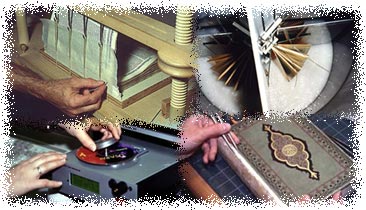Caring for America's Library
A Brief History of Preservation and Conservation
at the Library of
Congress
Kenneth E. Harris and Susan E. Schur1
One of the early Librarians of Congress, in transforming the Library from a good facility serving the needs of U.S. legislators into one that would become the largest and most complex universal library in the world, realized that the acquisition path did not have to be hampered by limited funds. Several new approaches were utilized whereby large quantities of free materials were and still are being channeled into the Library. With collections growth thus proceeding in astonishing steps, questions arose regarding proper maintenance of the holdings. Not only did space become a problem, but also collections care.
Although the Library has a tradition of concern regarding minimizing the deterioration of printed matter and improving handling and care procedures, its preservation2 activities have been organizationally centralized only since 1967. In 1965, a national preservation planning conference jointly sponsored by the Library and the Association of Research Libraries led the Library to re-examine its preservation activities and the need for application of scientific and sound management principles to its program. Following these developments and awareness of preservation needs resulting from international response to the disastrous flood in Florence in 1966, the Library consolidated its preservation activities into an organizational unit that would be responsible for protecting the collections and extending their useful life. A concerted program is now carried out by components of the Preservation Directorate -- the Office of the Director for Preservation (which includes the Mass Deacidification Program and the National Digital Newspaper Program) plus four divisions: the Binding and Collections Care Division, the Conservation Division, the Preservation Research and Testing Division, and the Preservation Reformatting Division.
Notes:
1. Kenneth E. Harris is the Preservation Projects Director at the Library of Congress. Susan E. Schur is publisher and editor of Technology and Conservation of Art, Architecture, and Antiquities. Much of the information in this piece is adapted from an article on this same subject that Ms. Schur authored in the February 1982 issue of Technology and Conservation, Vol. 7, No. 2.
2. In the United States, "preservation" is a term that describes all of the activities that minimize chemical and physical deterioration and damage and that prevent loss of informational content. The primary goal of preservation is to prolong the existence of library and archival material for use, either in their original physical form or in other ways. It has broader implications than "conservation" (which it includes), encompassing binding, reformatting, rehousing, physical support, cleaning, environmental stabilization and related technical and facility issues that work together to provide for longevity of an institution's collections. "Conservation" describes examination, documentation, and treatment of important artifacts such as manuscripts, rare books, works of art, or museum objects. It includes stabilization, strengthening, restoration, or housing of materials in specialized ways aimed at sustaining survival of the objects as long as possible in their original form. In some other cultures and languages, the connotations of the terms "preservation" and "conservation" are reversed, with derivatives of the word "preservation" being used to describe activities that we characterize in this country as professional "conservation," and vice versa.

